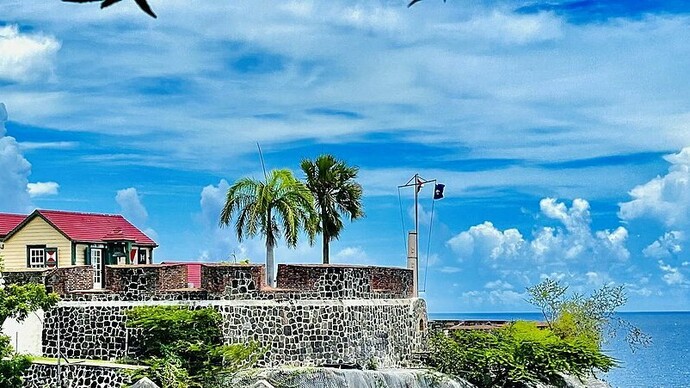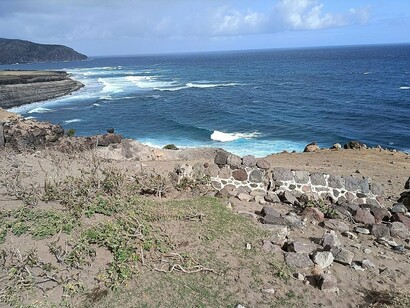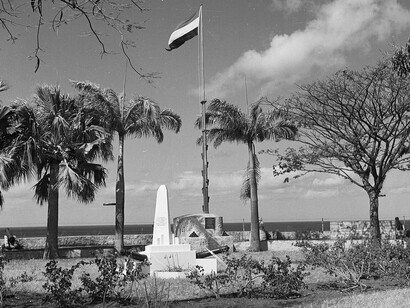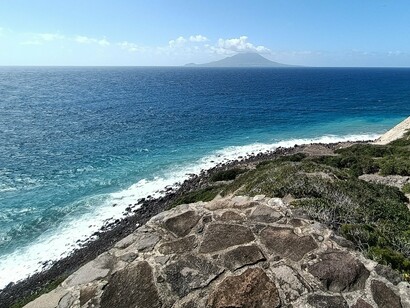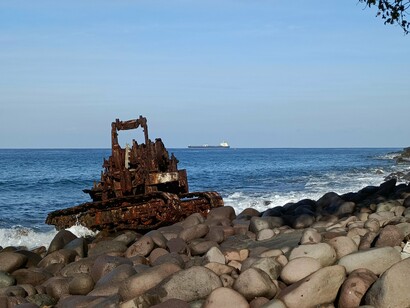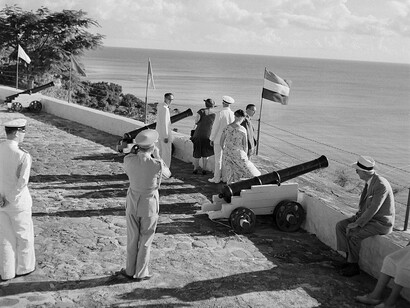On November 16, 1776, an official gun salute of 11 shots fired by Saint Eustatius canons made the tiny Caribbean island the first foreign power in the world to recognize the independence of the fledgling United States of America. At that time, Saint Eustatius, named after a Christian martyr and known locally as Statia, was the most profitable asset of the Dutch West Indies Company. It generated such wealth for traders that it was nicknamed The Golden Rock.
Today, the small island of 3,500 residents is part of the Dutch Caribbean and a special municipality within the Kingdom of the Netherlands. It is located in the northern Leeward Islands, southeast of the Virgin Islands. Its connection with the United States is celebrated each year on November 16 as Statia America Day, one of the island’s biggest holidays.
U.S. President Franklin D. Roosevelt visited St. Eustatius in 1939 to recognize the importance of the 1776 First Salute and get to know the source of supplies for the rebelling North American colonies. He presented a large brass plaque to St. Eustatius commemorating that day, which is still on display atop the walls of Fort Oranje.
While Statia’s beaches may be narrow and made of black volcanic sand, its waters are magnificent. National Geographic in 2022 declared the island’s waters the best place in the Caribbean to scuba dive. Statia’s National Marine Park encircles the island and is bigger than the island itself. It is one of the largest marine sanctuaries in the Caribbean.
Even my short beach dive there treated me to encounters with sea turtles, an octopus, a wide array of colorful angel fish, corals, and ancient shipwreck parts. A multitude of archaeological treasures, wrecks, lava flows, and interesting underwater topography can be found among Statia’s 30-plus dive spots.
The island is about eight square miles and is known for its diving spots, eco-tourism, and hiking trails. The dormant Quill volcano provides pleasant hiking trails to the top or around the mountain, treating visitors to verdant flora, including 17 types of orchids. Hikers there sometimes catch glimpses of the endangered Antillean iguana or the red-billed tropicbird. The volcano’s interior has evolved into a rainforest. From the top, one can see neighboring St. Kitts and Nevis, St. Barts, St. Martin, Anguilla, and Saba.
If you are fortunate enough, you may find pentagonal dark blue “slave beads” during your ambling around the island or while exploring its waters. According to local Statia folklore, you do not find the beads; they find you. It is the one item divers are permitted to take home. The beads were made in Amsterdam by Venetian glassblowers. The West Indies Trade Company used the beads to buy slaves in West Africa.
The island played an important role in the trans-Atlantic slave trade and the intercolonial slave trade. A wall built by slaves has been preserved to honor those who built it and, according to former governor Marnix van Rij, who praises the resilience of Statia’s residents, reparations have been made to the families of slaves.
Golden Rock Dive and Nature Resort ushered in a new era of luxury offerings on St. Eustatius. Golden Rock Resort consists of 40 acres overlooking the sea, at the southern edge of Quill Mountain. The resort has more than 130,000 colorful shrubs, trees, and flowering plants, boasts two of the best restaurants on the island, two pools, a mini-golf course, a spa, a gym, a PADI scuba dive center with a training lagoon, a large playground, and paddle/sport courts. A small train loops around the property to transport guests.
I stayed in one of the cottages on the property. These one and two-bedroom small houses have patios with loungers and hanging egg chairs, outside kitchens, a living room, and a large bathroom. The décor features natural colors, textures, and room accents.
Golden Rock also has two-story modern villa-like structures and a low row of lodging rooms, all with views of the Caribbean Sea. The buildings fit in well with the low slope off of Quill Mountain. All of Golden Rock’s structures are adorned with soft, colorful lighting that enhances the scene after the sun sets.
There are very few other lodging opportunities on St. Eustatius. Mass tourism has been avoided here, which adds to the understated allure. Van Rij is so enamored of the island and its residents that he purchased a vacation home here to continue his ties to St. Eustatius. I was lucky to meet him and his charming wife while hiking the Quill one morning.
Statia is a tranquil island with a light tourist blueprint. Nature’s gifts are considered its true wealth. While it lacks the powder sand beaches that grace some of its neighbors’ shores, it is a beautiful reprieve from other crowded spots in the Caribbean islands.
